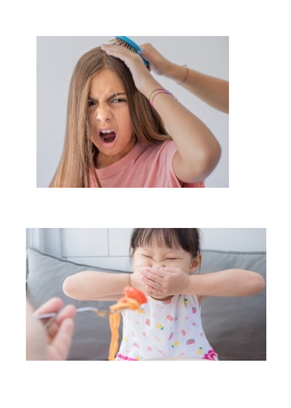Ouch, I felt that!
The tactile system is one of our 8 sensory systems: touch, taste, smell, sight, hearing, proprioception, vestibular, and interoception.

Proprioception is the unconscious awareness of body position.
It tells us about the position of our body parts, their relation to each other, and their relation to other people and objects.

Vestibular sensations generally relate to the sense of balance.
Interoception enables us to know what is happening in our bodies. Are we hungry? Are we thirsty? Are we cold or warm?
.png)
The sense of touch is a very big piece of the whole picture. This is important because touch alerts us to both discrimination and danger.
Touch discrimination allows us to touch and discern temperatures, vibrations, amount of pressure, and textures and shapes of objects.
Danger perception alerts us to danger. It allows us to jump in response to the “fight or flight” response when we perceive a spider crawling on our arm, to discern temperature or sharpness of an object and quickly move away to avoid burning, freezing, or sharp objects.
- Identifying objects with eyes closed – keys, comb, marble, block, coins, shapes, etc.
Sensory defensiveness often has a social–emotional impact as well—avoidance as a coping mechanism, feeling anxious and uncomfortable in social situations and having to adapt or eliminate activities.
Both sensory defensiveness and anxiety have the power to be very debilitating across all aspects of an individual’s life including emotional and social experiences, motor performance, and activities of daily living.
Suggestions:
- Give advance warning. I am going to comb your hair.
- Changes in one’s diet may occur. They may not like smooth peanut butter but prefer chunky peanut butter now.

